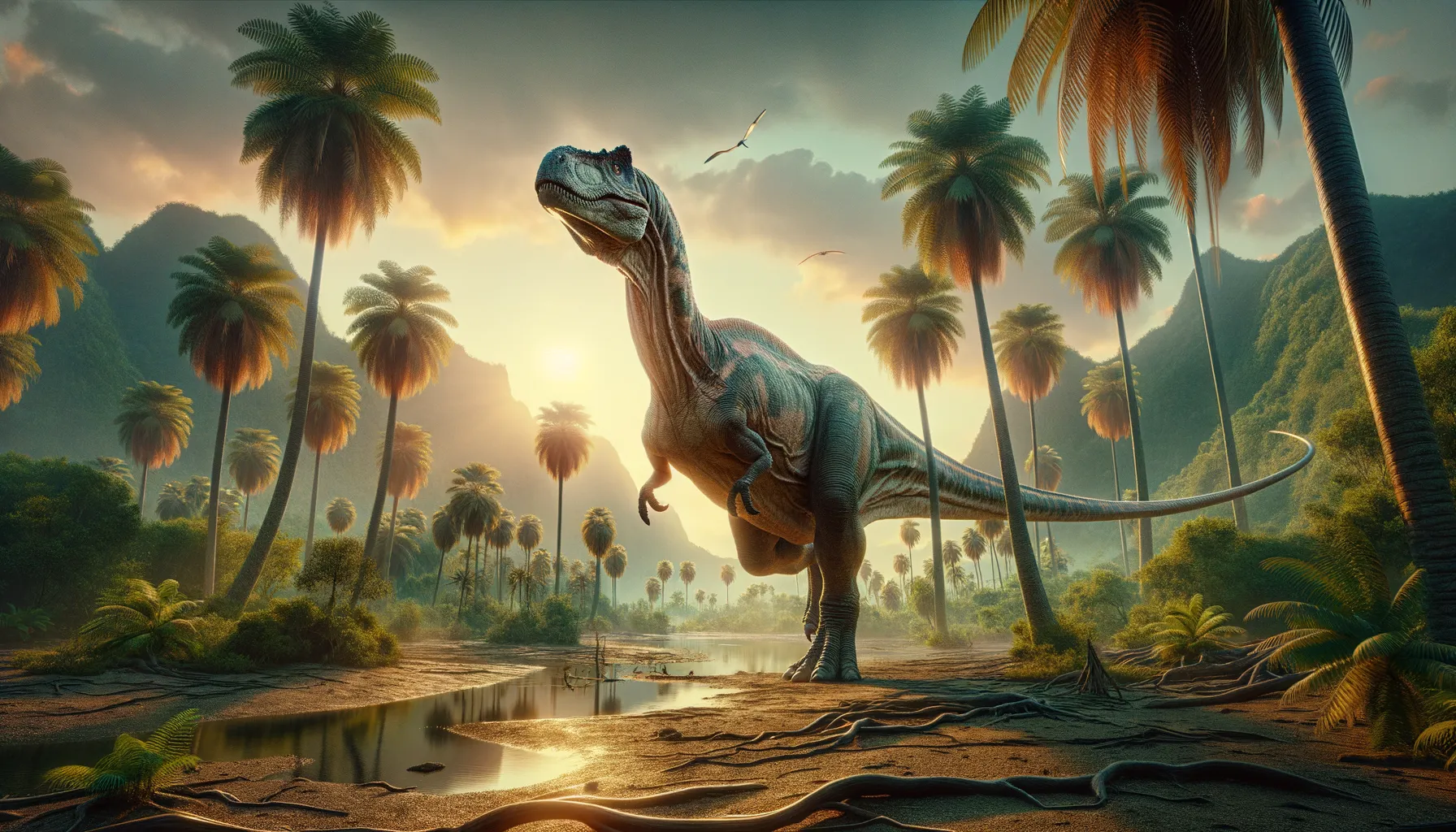
Phuwiangosaurus
Majestic giant from ancient Thailand's past.
Period
Cretaceous
Length
Up to 18 meters long.
Height
Around 6 meters tall.
Weight
Approximately 30,000 kilograms.
Phuwiangosaurus is a genus of sauropod dinosaur that roamed parts of what is now Thailand during the Early Cretaceous period. It was a massive, plant-eating dinosaur that belonged to a group known for their long necks and tails. This dinosaur played a key role in its ecosystem, helping to maintain plant diversity through its grazing habits. Its discovery has provided valuable insights into the diversity of dinosaur life in Asia.
Diet
Phuwiangosaurus was a herbivore, meaning it primarily ate plants. Its long neck allowed it to reach high vegetation, and it likely fed on leaves, ferns, and other soft plants. This diet required it to consume large amounts of plant material daily.
Hunting
Being a herbivore, Phuwiangosaurus did not hunt other animals. Instead, it focused on finding areas abundant in vegetation. Its long neck and high vantage point helped it spot food sources from a distance.
Environmental challenges
Phuwiangosaurus faced various environmental challenges, including periods of drought that would limit vegetation growth. Predators likely posed a threat to younger individuals, although adults were relatively safe due to their size. Changes in climate and habitat over time would have influenced its migratory patterns and food availability.
Speed
Slow-moving due to its massive size.
Lifespan
Estimated around 70 to 100 years.
First discovery
Found in Thailand in the 1970s.
Fun Facts
- Phuwiangosaurus is a sauropod dinosaur that lived during the Early Cretaceous period, about 130 million years ago.
- It was discovered in the Phu Wiang National Park in Thailand, which is how it got its name.
- Phuwiangosaurus was a long-necked herbivore, meaning it primarily ate plants.
- This dinosaur was a giant, measuring up to 20 meters (over 65 feet) in length, making it one of the largest dinosaurs found in Asia.
- Fossils of Phuwiangosaurus include bones and teeth, providing valuable insights into its size and lifestyle.
- It shared its environment with other dinosaurs like Siamotyrannus and Siamosaurus, which lived in the same region.
- Phuwiangosaurus's discovery helped put Thailand on the map as an important location for paleontological research.
Growth and Development
Phuwiangosaurus hatched from eggs, and juveniles grew rapidly to reach maturity. This rapid growth helped them escape the more vulnerable juvenile stages. It likely took several decades to reach full size, during which they faced threats from predators and environmental changes.
Habitat
Phuwiangosaurus lived in what is now Southeast Asia, in a landscape that was rich in vegetation with rivers and floodplains. This environment provided an abundance of plant life, essential for its diet. Seasonal changes may have driven migration patterns, as the dinosaur moved to find better feeding grounds.
Interaction with other species
Phuwiangosaurus shared its habitat with various other dinosaur species, including other herbivores and predators. It likely maintained a peaceful existence with fellow herbivores while staying cautious of large theropods. Its large size provided a natural deterrent to many potential threats.
Natural lifespan
Its natural lifespan could reach up to a century.
Reproduction
Reproduction involved laying eggs in nests on the ground, with adults potentially guarding these sites. The eggs incubated in the warm climate of their habitat, eventually hatching into small, vulnerable young. Adult Phuwiangosaurus likely provided little parental care after hatching.
Social behaviour
Little is known about its social behavior, but it may have traveled in groups for protection and social interaction. Herds would find safety in numbers, deterring predators while foraging. Displays of companionable behavior might have occurred among group members.
Fossil locations
Phuwiangosaurus fossils have primarily been found in northeastern Thailand. These discoveries have been central to understanding the diversity and distribution of sauropods in Asia. Excavations in these regions continue to provide important paleontological insights.
